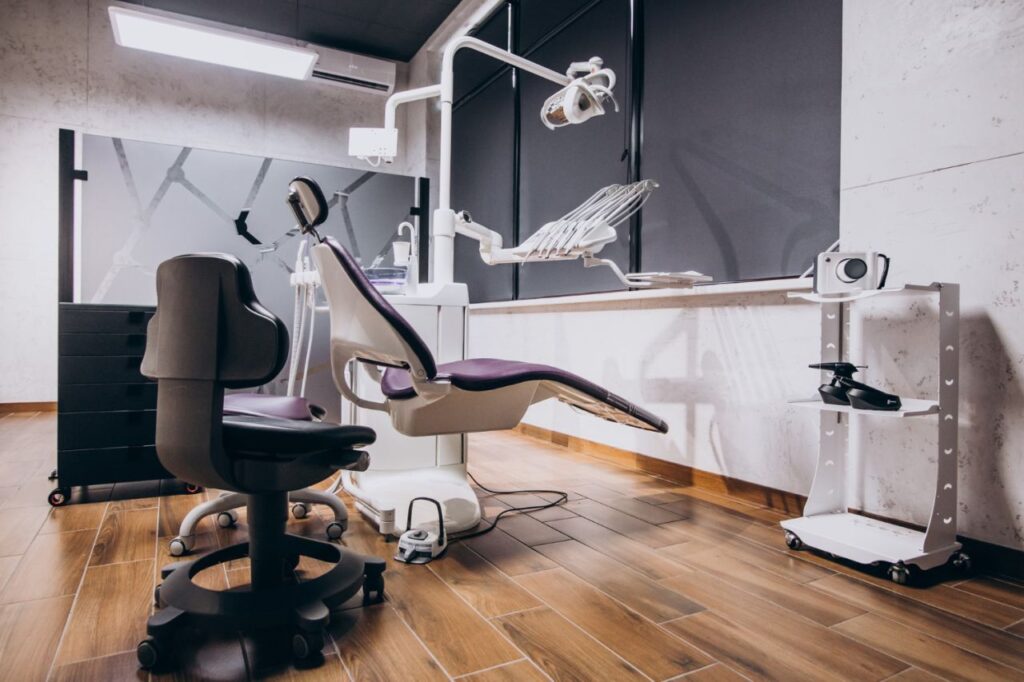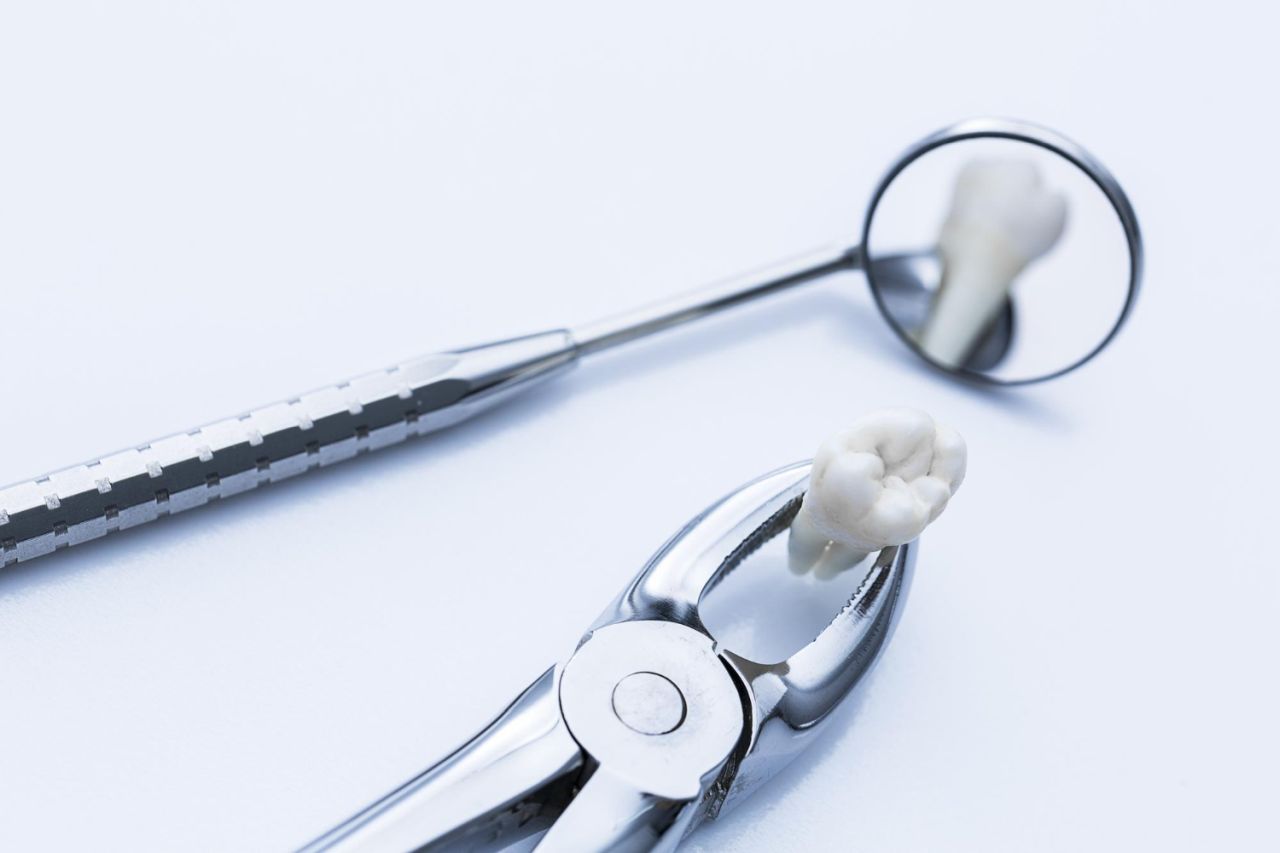Signs Your Wisdom Teeth Need to Come Out

Wisdom teeth can be a pain – literally! These third molars often cause discomfort and even infection when they start coming in. However, it’s important to know when it’s time to take your wisdom teeth out, so if you feel any aches or odd sensations in the back of your mouth, read on.
Do you constantly get headaches or feel uncomfortable in the back of your mouth?
If so, it could be a sign that it’s time to think about having your wisdom teeth removed.
While doctors don’t typically schedule this procedure until age 17-25, many people experience pain and uneasiness in their mouths and jaws as early warning signs of an impending problem.
But, of course, every person is different – some will never need to consider having their wisdom teeth removed, while others are at risk much earlier on in life.
To better understand whether or not it is time for removal, some common signs suggest it is necessary.
Let’s get started!
Impacted Wisdom Teeth – What it is
The wisdom teeth are also known as the third permanent molars. Wisdom teeth, also known as third molars, are typically located in the back of both the upper and lower jaws.
Wisdom teeth get their name from the fact that they typically sprout between the ages of 16 and 21, which is the time when a person is considered to have reached their complete capacity and acquired the most life experience.
The term “impacted wisdom tooth” refers to a third molar that cannot completely emerge into the oral cavity due to insufficient room or blockage from the components located close to it.
These components may include teeth next to the affected tooth, the bone covering the tooth, or extra gingiva.
How can it be avoided?
It is critical to practise excellent oral hygiene on a consistent basis in order to reduce the risk of developing dental disease around the wisdom teeth.
On the other hand, the placement of wisdom teeth in certain people’s mouths may not enable simple washing, which will inevitably lead to dental problems.
Therefore, consult your orthodontist on a regular basis.
They can recognise any illness affecting your wisdom teeth at an earlier stage. In addition, they will be capable of referring you to an oral and maxillofacial surgeon in a reasonable timeframe for evaluation.
When is the optimal moment to extract the wisdom teeth? Is it necessary for each individual to get rid of them?
Your orthodontist must always evaluate your wisdom teeth by the time you are ready to leave school, and they should continue to be evaluated routinely as part of your routine dental care.
This is due to the fact that even though totally submerged wisdom teeth typically don’t require any care, they can create troubles like a cyst on the crown every now and then.
If this cyst is allowed to grow unchecked, it could become very big and lead to serious issues like loosening or tooth loss and jaw cracking. This is why it is important to have your wisdom teeth checked regularly.
If the wisdom teeth that are impacted really aren’t creating any difficulties and are being watched, then it is possible to leave them in their current location.
Nevertheless, they need to be handled as quickly as they produce issues such as disease or degradation in the area where they are located.
Because dental caries can be handled and stopped, but it can’t truly be overturned, the best strategy, which needs excellent clinical decision making, is to attempt to extract teeth before the decay spreads to adjacent teeth.
What are the most typical signs and symptoms of a wisdom tooth that has been impacted?
A tooth that hasn’t reached its usual position is referred to as having an impacted wisdom tooth. For example, it may be tilted forwards, backwards, or sideways; alternatively, it may be at the perfect angle, but there may not be sufficient space for it to contact the opposing tooth; this phenomenon is known as vertical impaction.
Whenever the gum tissue around an impacted wisdom tooth becomes swollen or infected, the patient will experience discomfort.
This condition is known as pericoronitis. “Peri” refers to the area surrounding, “corona” refers to the crown, and “itis” refers to irritation.
When an impacted tooth gets infectious, the infection typically produces severe discomfort, aches when you chew on the affected region, and frequently results in the development of a nasty flavour in the mouth in addition to halitosis.
Mouthwashes containing antibacterial agents or a brief course of antibiotics have been shown to be effective in reducing discomfort.

It may be helpful to extract the opposing wisdom teeth that are “biting” on the gum around it; nevertheless, in most cases, once a wisdom tooth has gotten infectious, it will remain a source of discomfort. and the only sure remedy is to extract the impacted tooth.
It is unfortunate that some individuals don’t really come until the problem has progressed to the point where tooth decay has produced tooth necrosis (death) and abscess formation.
It is possible that this will cause the adjacent tooth to be lost unnecessarily or that it will need significant orthodontic care to keep it.
Nothing wrong? You Could Still Be Having Issues
As a side note, some people won’t have any obvious symptoms or signs of wisdom tooth impaction in any way. Latent wisdom teeth, on the other hand, shouldn’t be overlooked because of this fact.
It is possible that in the future, your wisdom teeth will continue to be a source of discomfort and a risk to your dental health.
If you are over the age of 17-25, which is the typical age range for the eruption of wisdom teeth, and you haven’t observed any indicators of tooth development, you might well have one or even more wisdom teeth that are impacted.
The only way to be certain is to come into the dentist’s clinic so that he may take an x-ray of your jawbone and observe the changes that have taken place there.
Obviously, there are some people who never get their wisdom teeth at all. It is estimated that as much as one-third of the worldwide people will be missing any or all of their wisdom teeth. (This is thought to have been caused by a mutation in a gene that took place over a few hundred thousand years ago.)
It may come as a huge comfort to you if you don’t own some of your third molars; however, it is always wise to contact a dental professional and check out what you could anticipate before making any decisions.
Warning signs to extract your wisdom teeth
1. Sensitivity or discomfort in the teeth
When a tooth erupts, it’s normal for it to be a little sore, but a wisdom tooth that’s impacted or infected can produce excruciating pain or increased sensitivity in the rear of your mouth.
The pain associated with wisdom teeth can range from being sharp to dull and pulsating, as well as producing a sensation of tension in the roof of the mouth.
2. Inflamed gums
When a wisdom tooth becomes impacted in the gum, it can lead to an infection that makes the gum around it seem red, causing it to swell and make it feel sore to the contact.
3. A foul smell coming from your mouth or a terrible taste in your mouth
If it is challenging for you to clean or floss your back teeth because of the placement of your wisdom tooth or because your gums are inflamed, this might cause the accumulation of germs and food debris, both of which can cause unpleasant breath.
4. Tense or hurting jaw
Wisdom teeth are known to exert tension on the teeth and jaws that surround them, which could also make it difficult to close and open the mouth, as well as create discomfort.
5. Cysts
In the event that an impacted wisdom tooth is not removed, cysts, which are liquid-filled sacs, can develop over time from inside your mouth. These could cause injury to the dental roots, jawbones, and nerves that are nearby.
6. Sinus issues
Wisdom teeth in the upper jaw causing problems can occasionally exert pressure on the sinus cavity, resulting in discomfort in the sinuses, tightness, or migraines.
7. Migraine, earache, or pain in the neck
Pain in the teeth or jaws that is produced by issues with wisdom teeth can sometimes spread to other parts of the head or neck, particularly if the issue is not addressed.
Diagnosis
Your first appointment with the orthodontist will consist of a full oral exam and x-rays to evaluate the state of your wisdom teeth and the status of the teeth that are close to them and the bone that surrounds them.
An impaction occurs in a wisdom tooth when it is prevented from emerging completely into the mouth because it is hindered in some way by the tooth in front of it, the bone or gums that encircle it, or both. Getting rid of them as a preventative measure could be beneficial.
What to anticipate during the appointment, as well as the necessary tests, is given.
- Because your orthodontist will want a comprehensive medical background, you should bring all of your prescriptions with you so they may be checked.
- In order to evaluate the wisdom tooth (or teeth), oral radiographs will be collected.
- Examinations, like checking the health of the teeth that are close to the wisdom tooth, could be carried out.
Treatments
A surgical extraction is the recommended treatment for most impacted wisdom teeth. Extraction of an impacted wisdom tooth by surgery is a very basic medical procedure that may typically be done under either general or local anaesthesia.
Your doctor will discuss with you the various options for anaesthesia and help you select the one that is most suited to meet your requirements. During the procedure, the tooth will be exposed by first lifting the gums that are concealing it so that the bone and tooth can be seen.
It’s possible that the tooth will have to be partitioned in order to be extracted. After that, the gums are sewn back into their proper position.
What kinds of difficulties might impacted wisdom teeth cause if treatment is not sought?
When left untreated, wisdom teeth that become impacted can lead to a deterioration in the teeth surrounding them, which could also lead to the need for restorations or root canal treatments for the affected tooth.
In addition, if the impacted tooth is not addressed, it can lead to periodontal disease below the lower second molar teeth.
This illness maintains a chronic gap behind even after the wisdom tooth has been extracted from the mouth.
Impacted wisdom teeth could also result in the creation of cysts all around the crowns of the teeth, a condition known as a dentigerous cyst, which can lead to bone loss, tooth loss, and fractures in the jaw.
There’s also some proof that a persistent illness around the wisdom teeth could be related with a systemic elevation in inflammatory cytokines that have been linked to the development of cardiovascular disease.
They are also capable of causing persistent bad breath.
Getting ready for surgery
In the time leading up to the extraction of your wisdom teeth, it is important to practise diligent dental hygiene and take any medicine that your doctor has recommended.
If you’re a smoker, it is highly recommended that you give up the habit at least one week before your surgery and at least two weeks following surgery.
What happens during wisdom tooth extraction?
Before extracting a client’s wisdom teeth, a thorough evaluation of the client’s overall health and the status of the wisdom tooth or teeth is necessary. Oftentimes, this merely calls for straightforward dental X-rays, but on other occasions, more in-depth oral CT scanning, also known as cone beam CT, is essential.
This may be particularly helpful in determining the relationship between the roots of the tooth and, for instance, the inferior dental nerve or the bottom of the maxillary sinus, both of which are examples of anatomical structures close to one another.
After taking into account all of these aspects, a determination is made regarding whether or not it is likely to be helpful to have the tooth extracted.
This choice includes calculating the risk-to-benefit proportion of the procedure. For example, suppose it is determined that the tooth requires to be extracted, but it is determined that the danger of nerve injury is very significant.
In that case, an alternative solution is to eliminate the crown of the tooth while leaving the root tips in place.
This is done in the event that it is decided that the tooth requires to be extracted. This procedure is known as a coronectomy (from the Greek words “corona” for crown and “ectomy” for excision).
Although there is a little elevated incidence of post-operative discomfort and illness and the possibility of needing a second treatment later in life to extract the roots, the danger of nerve injury is significantly lower with a method known as a coronectomy.
The procedure can be carried out with the patient underneath the influence of a local anaesthetic, sedative, or full general anaesthesia. In most cases, it requires cutting the gum and digging into the tooth as well as the bone that surrounds it.
Piezo dentistry drills are new dental drills that are precisely developed for slicing teeth and jaw bone. These drills are less stressful and less prone to harm nerves than traditional dental drills, but they are more pricey.
Following the completion of the treatment, the gum will be sutured, and the individual will be administered post-operative antibiotics as well as pain medication.
How long does recuperation take after wisdom tooth extraction?
It is common to experience a significant amount of post-operative inflammation and discomfort, as well as difficulty expanding the mouth wide.

Healing will rely to a certain degree on how severely impacted the teeth were and how many have been extracted.
However, it is usual to experience significant post-operative discomfort and edema. Bruising is another typical side effect. Transient nerve injury rates are relatively prevalent, accounting for 1-2 per cent of all cases.
However, the rates of irreversible nerve damage are significantly lower. In the hands of a skilled practitioner, a jaw fracture is a very unusual occurrence.
Dry sockets and other kinds of infections are more likely to occur in those who smoke and in individuals who don’t exactly adhere to the post-operative recommendations.
Even so, they can affect up to five per cent of individuals and cause severe discomfort that lasts for many weeks, and frequently necessitate a number of trips back to the doctor for socket dressings, medicines, and maintenance.
Even though they are rare, they do happen. If the decay that caused the tooth removal was located in the tooth in front of it, then the orthodontist will be required to replace that tooth after the procedure has been completed.
Post-surgery care
Following the operation, it is normal to have some light bleeding from the site. This bleeding can be stopped by chewing on a piece of gauze that has been placed over the operated area for approximately thirty minutes.
It’s possible that you’ll wake up with a swollen face and bruises on the skin’s surface, both of which will get worse for the first three days and then get better after that. For the next several days, you may need to be more capable of opening your mouth quite as far as normally.
Following the operation, patients are typically given prescriptions for pain relievers, antibiotics, and an antibacterial mouthwash. After dental procedures, it is important to practise diligent oral hygiene and stick to a menu consisting primarily of pureed foods during the first few days after the procedure.
